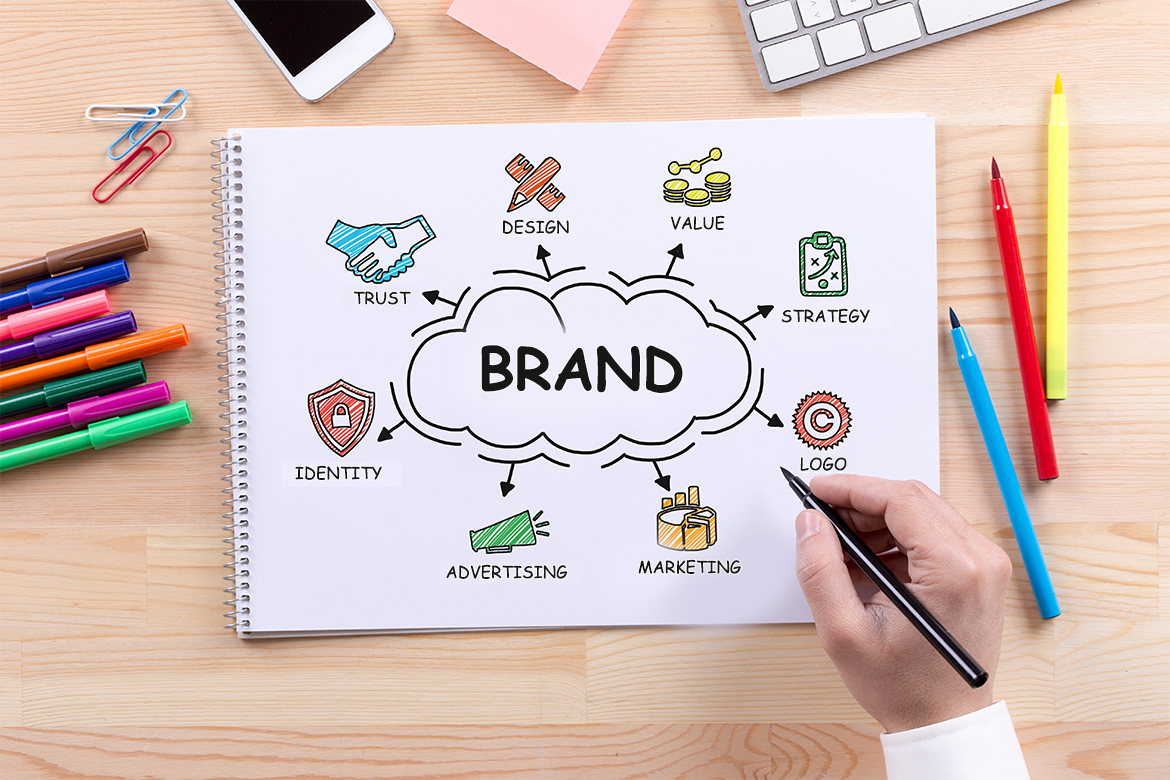Branding

If we said 'Just do it' to you, what would you think of first? How about 'Can you hear me now' or 'Betcha can't eat just one'? These slogans (Nike, Verizon, Lays chips) were all conceived as part of the bigger picture branding style guide used by each company. Their slogan, tagline, logo and connected imagery are targeted to specific markets and displayed with great forethought on all advertisements, websites and products etc.
Branding Style Guides
From startups to large B2B/B2C organizations, your style guide is your most important marketing strategy. This style guide is a document that the template for how your brand should be presented from both a graphic and language perspective. This keeps multiple contributors to the company's product for example, all on the same page so that the corporate style is reflected, and the brands consistency is kept in check on everything from design to writing.
Why Are They Important?
This guide will define you as a business that differentiates yourself from all others. This is the one guide to define your product or service, deliver key messaging and encourage loyalty by driving trust and authority in your product, service or company. Author of The Brand Gap, Marty Neumeier, said, "A brand is a person's gut feeling about a product, service, or company." You want your customer to feel good using your product and your branding style guide will encourage a sense of trust built on a marketing framework that delivers regularly.
You know first impressions will make or break you. It's been a mantra for years, simply because it is fact. UX and UI designers have to understand your business goals, mission and end users from your perspective. Branding and design go hand in hand from this point on and remain interconnected throughout the project. Your branding style guide allows your users to be able to recognize your brand either as one element alone or as a whole. You recognize Nike from its name or from just the swoosh logo. You know Wayfair from its commercials or just by its jingle. Your application, project, service must encompass the same design qualities.
Elements of Design
User Experience and User Interface design are the two areas that will make or break your project. While their focus is on separate areas of the project, they work in harmony throughout the project to bring your vision to life. This is best accomplished using the brand style guide.
Always the goal of perfection, your branding style guide would incorporate at minimum, the following:
- Clear pathways to allow users to effortlessly complete their goals within the application.
- Robust application architecture which optimizes findability and usability.
- Users who are able to easily operate the application in as best a straightforward way as possible.
- Incorporating the company brand guide details for logos, font, color palette, and tone to keep your brand presence consistent.
- Engaging, exciting, entertaining graphic elements. These will be used to create long lasting positive emotional hooks.
- Multiple touch points for users to engage with the application or business (call to action buttons, request for information etc.).
- Most important is that the look and feel remain consistent, easily recognizable and connects every time with your brand image.
The Way Forward
Every destination requires a map to arrive prepared and in style. Your project is no different. Creating user task flows, wireframes, mockups, storyboards and sitemaps provide the design team with an accurate vision from your company to translate your ideas into the finished product. Like all projects, design using the branding style guide is a continuous process. Any introduction of new elements to the project will be incorporated and updated for branding smoother and more efficient.
Finding a talented professional UX and UI team using branding style guides, can provide you with great design from concept to deployment. This is the first step in creating your project for users to enjoy time and time again.